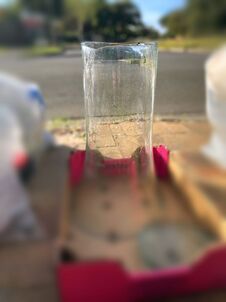 This blog has recycled in my head many times. I have turned it over and left it to mature. Here I am more than six months later and looking again at these de-composed thoughts. It is still a lump of thought and if I wait any longer it may never emerge. Basically, I am wondering about change, being a change that we want to see and how this actually works. There are some experiences from my day-to-day life that remind me of change. Twice a month we have a recycling day. We collect plastic, paper and tins for a two-week period and put them out for collection and recycling. We have so much recycling that our weekly rubbish bag is almost empty. I even put my favourite but broken glass vase out for recycling. This tall and elegant vase was from Ngwenya glass factory in Swaziland, which recycles glass into new forms. I had enjoyed using this vase for many years and thought it was appropriate to let it go back into a recycling process to become another form with a different function. Filling and turning kitchen waste in a compost bin is part of my work as a gardener. I am still trying to develop a vegetable garden amidst the challenges of poor soil, snails, caterpillars, and a dog who eats the ripe tomatoes. Compost is an entire mystery to me; we throw in our waste, and it changes with some moisture and heat into a rich nutrient compost that nourishes plants. This rich material, with microscopic fungi and bacteria as well as wiggly earthworms remains intriguing to me, no matter how long I ponder on it. How does it work? How does waste change into good stuff for plants? A few months ago, our city was handing out compost bins to encourage communities to recycle kitchen waste for garden use. This is a wise decision aimed at decreasing rotting food waste on municipal heaps, which is a health risk. I started thinking about what we view as waste and how we dispose of it. I wondered about what we do with those parts of ourselves that seem like a waste of energy and resources, for example complaining about our neighbours, getting irritated with the driving of others, etc. Would it be possible to recycle our stuff, like anger and irritation, that create wasteful arguments and consume energy, into something else that is good? You may be asking yourself, how does this relate to children and parenting? A good question. I do not know the answer. All I know is that our children are experiencing a lot of pressure with expectations of reaching their milestones and developmental stages. It seems that many children are reprimanded for making mistakes that could be learning experiences; for example, dropping a glass that breaks which could be a moment of learning about fragility and holding tightly , or when we are dropped, we break. Can we support children to learn through falling, disappointments, frustration and see all of these challenges as opportunities to turn hard experiences into good lessons? I appreciate that our broken glasses and vases have sentimental value and a history, but it is only a material object that could be replaced unlike trust in a relationship. I continue to wonder about these things and welcome any random thoughts to be added and recycled to my pile of dilemmas. Perhaps our collective ideas and actions, even if unformed will be the change that we long for.
3 Comments
International Mother Earth day was celebrated on the 22nd of April followed by mother’s day in South Africa on the 8th of May. Two other days family days have since been celebrated, namely Youth Day and Father’s day. In this blog I explore the connection between International Mother Earth day and Mother’s day. I am wondering if these two days are deliberately close or if this is simply coincidence.
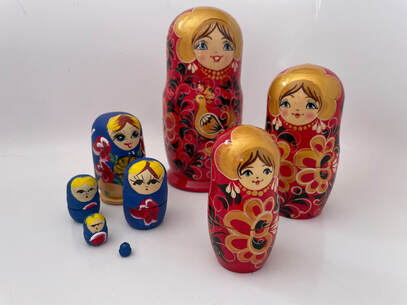 I have been wanting to write about Matryoshka dolls for some months. The start of the Russian-Ukraine war prompted me to explore the symbol and irony of these dolls. The war seems far away and yet we have learnt through the Covid pandemic that we all are interconnected and what happens in one area affects others, and in the end, we are all infected and affected. I am grateful for a gift of the matryoshka dolls from St Petersburg, a reminder of the cultural heritage of Russia. Matryoshka dolls were designed in 1890 by Sergei Malyutin who was a folk craft painter. Matryoshka is related to a Russian word for Mother and Mother Russia. The dolls were traditionally made from linden wood, turned on a lathe and painted, often by women. The Mother figure, a simple peasant woman with black hair and a painted red tunic, is home to seven smaller dolls that are nested inside her, representing family and children. Matryoshka dolls symbolize maternity, family unity, collectivism and warmth as expressed in the Russian culture. The Mother image in the dolls has been broadened to include other family members such as Fathers, and some dolls even have faces of politicians. The symbol of a Mother in these matryoshka dolls is a holding space, which is both a protective and engaging space for children. The Mother figure is a strong symbol of protection and a clear voice, that says, “if you want to get to my children, you first go through me”. Mothers are known to fiercely protect their children, more so in times of crisis and stress. And when Mothers join together, their courage to protect their children can be astounding and sacrificial. The collective voice of Mothers can change the minds and actions of others who intend to harm children. The Mother figure in the Matryoshka dolls offers a holding space for children to grow. This is a space of showing up for a child in different experiences. It is also being a presence for a child to rant, make mistakes, work things out and learn about life with support. A holding space does not come with demands, doing for, controlling, or taking away from, but rather offers a kind and understanding companionship. The skill of the artists who make these dolls is to create a good enough fit from smaller to bigger dolls into the space of the Mother. A holding space or good enough fit is nonjudgmental and not controlling; for example, it might be expressed in saying ”we all learn through our mistakes, how can we resolve this one?”. When we offer a holding space for our children, we open our hearts to their story and respond with compassion. This no easy task in an age of expectation and pressure on children to perform and show results. We are learning through research and evidential experience that children grow and learn when they feel safe and given the space to learn through their experiences with support and compassion of parents and encouraging adults . Stacking cups and nesting eggs are similar toys to matryoshka dolls and often a favourite for children over one year. They form one of the first mathematics lessons about size and how shapes fit into each other. The Matryoshkas dolls add a philosophy to the math logic with the interconnections between units, for example individuals in families, families in communities, and countries on the earth. These ‘toys’ have much to teach us all through play and some reflection. Let us ‘show up’ or be a compassionate presence for our children. Let us teach our children about peaceful ways whilst unlearning those that bring harm to others. In this way, we help to create a better world for all Let us learn to respect Matryoshka Mother who embodies a symbol of warmth and unity for her children. Let us be mindful of our interconnectedness when playing with children using stacking toys. 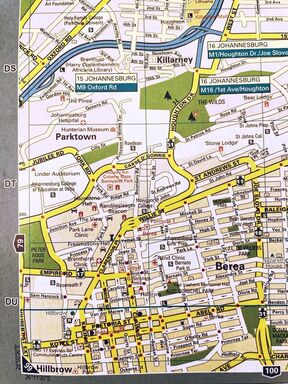 Locating a new destination is much easier now with technology such as online maps and audible directions. Google maps has become a friend to me when navigating in unfamiliar areas and diminishing the fear of getting lost. I hate getting lost and not knowing my way in finding where I want to go. The rising anxiety and sweating about being late or not arriving makes me wonder if a visit to somewhere new is even worth the stress. I remember the days of using a map book, placed next to me on the passenger seat. I was often confused about which way to view the map. And then it was stressful having to find a different page, not just turn the page when the directions took me to the edge of a page. I learnt to manage this challenging perceptual task but prefer the easy option of voice directions that tell me, ‘Make a U-turn’. Sending or receiving a location pin is even better. It is so easy to follow the directions and being led blindly by technology of nowadays. I enjoy playfully asking young children, ‘where do you live? I know that they have not yet learnt about bigger areas beyond their small space at home. The confused facial expression and response to this question delights me. There is a look of wonderment as if to say, ‘why are you asking?’ and ‘you know where I live’, as the answer often is, ‘at home’. Of course, silly me, everyone knows where little children live, ‘at home’, which does not even need an address or directions. For children, home is a centre point, a safe base from which to venture out and then always return. The importance of safe homes is critical to the development of children. Young children seem to have an inner wisdom that is both simple and complex. My question remains. Where do you live? Where are you? Where is your location pin? We have been through the third wave of a pandemic and may go into a fourth. We have been disrupted in our places of employment, and home has become both a work and rest space. We have been displaced by uncertainty, and google maps is not giving any direction. Where are we? I take comfort from little children. Let us be ‘at home’ and live fully in this moment. Perhaps uncertainty, is knocking at our door. Despair and grief may be the welcome home sign. Can we be at home with all the turmoil and uncertainty? Can we be honest about where we are at this time? Can we be brave enough to say that we are at home in dealing with uncertainty or have left for better places? Naming where we are at this time is a courageous start to finding ourselves and coming home to our pandemic reality. And when we bring our honesty into the light, perhaps the sun will shine again through our windows, and we will know that we are at home. Let us create safe homes for our children Let us follow directions home when we are lost. Let us teach our children that it is okay to get lost and ask for help to find our way back home. 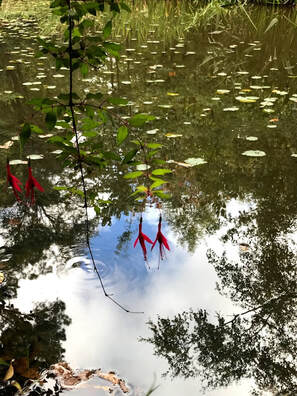 Wearing masks in public places has become the new norm; we are a masked people waiting for vaccines and herd immunity. It is amazing how we can adapt to a new way of masks. Essentially, we are trying to protect others, filter our viruses from others. Wearing a mask is a physical reminder of protection of others. In this blog, I want to explore the role of filtering to protect others. I had an experience with my young child that has remained with me, one of filtering words in public spaces. I was standing in a shop, and my child announced loudly to anyone that was within hearing range, ‘that man is fat’. I saw that man and indeed he was fat. I felt embarrassed, lost for words, knowing that my child had spoken the truth and also that this should not have been a public announcement. So, I leant down and whispered into my child’s ear, ‘you can’t say this’. There was a frown, and the face was filled with confusion. ‘But why?’ I was asked. I did not know why nor what to say, except to make soft excuses that this was not polite conversation in public spaces. I have often wondered about this incident and what I actually taught my child on that day. My child was expressing an observation, not with judgement but by noticing the size of a man, a description of what was seen. If a child had to say, ‘the banana is yellow’, we would applaud the recognition of colours. We may go on to explain that a green banana was still growing and that yellow bananas are yellow and ready for eating. A lesson of interpreting colours. There is more to a banana than the colour, and more to a man than his size. This is what I missed on that day. I left the conversation with a single story of ‘the man was fat’ and missed the opportunity to notice that the man was happy, engaging and also deaf to this conversation. We are each more than the adjectives assigned to us, and especially a single description. I was taught that the ‘’truth hurts”. I am wondering if a single truth of being a fat man is what hurts. If the single truth were broadened to more positive aspects of the man, perhaps there would be a better and more balanced view. And perhaps the man would have taken kindly to a small child making an innocent observation. However, I am mindful that I taught my child to keep quiet about single truths in public places. We have all learnt to filter what we say, keeping the truth to ourselves for polite conversation. I am not sure who we are protecting. I have learnt through experience and making mistakes that the truth can also be liberating. Naming and accepting the truth in trusting relationships can help us to let go of the hurt. Parents need little children to observe and point out truth. We need to hear little children’s perspectives that often does not come with our learnt judgement but from a clearer view of what is. We need to listen to our children and encourage their truth and help them to see a bigger story. This may liberate us in telling our truths. We may even find our voices as parents. Let us protect children from keeping their truth silent. Let us respect children for their childlike observations, either in word or gesture Let us hear children for their story and perspective. Let us learn from children to tell their truth in trust and without judgment.  Home has images of safety and comfort, warm food filling grumbling stomachs, comfortable clothes embracing bodies, laughter and fun touching hearts. This is home, a place where we can just be ourselves, be accepted and be nourished. For many, though, home would be described as a place of tension and stress, and without comfort. During this pandemic, many have lost their homes and work, or are working online which has blurred the lines between home and workspaces. I am mindful of young children who learn about life and others through their experiences and views of home. In this blog, I would like to try to peep inside the window of a child’s perspective of home when life is challenging. I remember many days coming home to my children after working away. All was calm, as I parked my car. I stepped inside my home expecting a welcome greeting but was dumped by unexpected emotions, coming from nowhere. This massive outburst, like a great forceful wave dumped me, and then enveloped me in twists and turns, of ‘he said’ and ‘it’s not fair’, and ‘I hate it’. The words continued to roll over the tongues until I found myself flattened in the middle of somewhere, supposedly at home. I sat for a while to gather my breathe, not knowing where I was or if the sky was even up. Disorientated and dumped by the largeness of honesty and truthful words from small people. I looked at the child minder, who shrugged her shoulders and said calmly that my children were absolutely fine until I came home. This felt like another crashing wave of disappointment, that made me wonder what was wrong with me. I have thought about these experiences many times. Now, looking back, I realise I only saw the overwhelming wave and missed seeing the children, who felt so deeply and did not know what to do with their emotions apart from dumping them onto someone else. This is what we do at home, don’t we? Children learn through their observations how to deal with life, which includes being flattened by the unexpected. I knew this in my head, but not fully in the rest of me. Time has allowed me to see experiences from a child’s eyes, and to understand more of how they look at the world. The child in me would still love to dump stuff on others but this only leads to conflict and judgement about what is acceptable behaviour for a big person. When we come closer to the viewpoint of a child, we can see their perspective better. Children feel emotions deeply and do not always have the words to express them. Emotions are hard to contain so they simply let them burst out. Emotions are felt deeply and do not always have a name. Losing a game is hard especially when we are told that winning is the best. And losing is not often rewarded. Making mistakes can cause more trouble, even telling the truth. It feels like life is scary and threatening like a big dumping wave. Time can bring waves of realization that honest feelings expressed by children are a gift to be treasured. They are giving their deep, real self to the relationship. To receive this honesty may feel uncomfortable, perhaps because we are not used to such honesty and trust from others. Children are not looking for any wisdom, just a safe place to dump their truth. To give a child a place, a home to be able to express these honest emotions and still feel safe is a huge gift to their wellbeing and safety. To teach a child that truthful emotions are okay, enables a child to take a deep breath and relax into the challenges of life. Many of us have not had experiences of being able to express our truthful emotions and have spent many years behind walls within our own homes, walls to protect us from the judgments of others. Children do not need parents to sort their problems out, as in helicoptering parenting, they merely need our presence. They need parents to hear their stories and see their best intentions. Let us be present to our children. Let us show up and be with our children when they need us most. 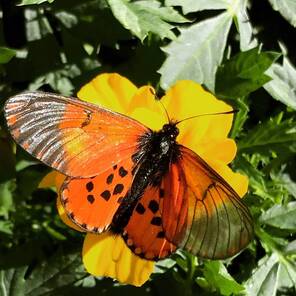 The cooler weather is reminding me of this time last year when we went into lockdown and connections with others were, and still are, disrupted. To prevent each other from the spread of the Covid-19 virus and variants, we are learning to live with physical distance, less social contact, and the wearing of masks in public. For some, zoom connections and fatigue are becoming part of our daily lives. I am wondering about what young children in our communities are learning. Masked faces and fearful eyes may be a new human variant to them. I do wish though, that people would wear their masks over their noses so that we are all spared from looking up into the dark recesses of unwanted knowledge. My question is, if it takes a village to raise a child, what is this village communicating from behind masks to young children? In this blog, I explore some thoughts about connecting with babies in this new world of masks and physical distance. I am reminded about an interaction with Roland, a young boy at that time, who had cerebral palsy, was blind and was a wise teacher of communication. He told me one day, “Tannie (aunty), I can hear you smile”. I did not realize that anyone could hear a smile until that day. Roland, who could not see facial expressions, had learnt to listen more carefully for a smile. This phrase and insight into communication has stayed with me. Until that day, I relied on seeing a smile. Roland taught me that a smile has different ways of being expressed. This has helped me to ‘smile’ at others from behind my mask, knowing that perhaps they will also hear the smile, and see pleasure in my eyes. I am grateful to Roland for helping me to see that communication is more than what we see and hear. Perhaps Roland would say that we smile with our whole bodies. Young babies learn to ‘read’ social cues through facial expressions, such as smiling and eye contact. They also learn how voice and body language link to what they see in a smile. From about two months of age, babies can maintain eye contact and notice facial expressions. This mutual gaze between the baby and parent, called shared pleasure, has a positive effect on parent to child interactions and is key to much of the information that an infant learns. Shared smiles help to organize social and emotional connections between parent and baby. A smiling baby in the checkout queue in a shop seems to be able to organize even the grumpiest customer into a happy observer. At home, without masks, mutual pleasure and social interaction can be explored freely with primary caregivers. In public spaces, relating to a baby with a mask, we may need to be mindful that we smile with our voices and body language. Most babies are quite sensitive to subtle social cues, so it is important to remember that the way we communicate reflects our attitudes. As a baby grows, communication develops into more than a smile and eye gazing. Babies learn to respond to subtle social cues, with a frown for example. Babies attempt to communicate with parents through their body language, gestures, and mood and caregivers are encouraged to notice this. From four months, babies learn to laugh in response to our laughing. They are also learning about other emotions, such as sadness and fear. A baby at a nine-month milestone stage of fear towards strangers and separation anxiety may need more reassurance when showing fearful signs looking at masked faces. If we are going to support babies through this pandemic, our village may need some awareness about what we are teaching young children through our actions. Our village needs to nurture communication skills to develop precious relationships with young children. Let us be mindful that: Smiles can also be expressed in voices. Eyes may reveal our hearts. Gestures and non-verbal interactions may communicate more than words.  One of the greatest gifts we can give to one another is to see and accept the other for who they are. This is can be hard to practice as we each come with our own bias towards the other. It is perhaps easier to see, accept and enjoy a small, vulnerable baby, which gives us a chance to learn the pleasure of seeing one another. This has even been given a name in research literature, called ‘shared pleasure’. This pleasure that is shared has been described as ’the parent and child sharing positive affect in synchrony’[1]. The understanding of the value and benefits of shared pleasure is unfolding, such as that it fosters positive psychological development in the child and moderates health risks of a parent, for example depression. I am left in awe that something as simple as shared pleasure can be so deeply beneficial to both parent and baby. To provide a concrete example of shared pleasure, I have asked a ‘new granny’, Ali, to describe her experiences of holding her first granddaughter. This is Ali’s story of delight in her granddaughter. There was a time I thought I would never have the chance to be a granny. Several bouts of cancer made me wonder. I watched as friends around me revelled in the joy of becoming grannies and I found myself longing to be one too. There was great excitement and joy when we were told the exciting news. From that moment I loved you. I watched you grow and felt you kick. I whispered love words as I rubbed your mum’s tummy and hoped you felt my touch. A bubble of excitement, eager anticipation, profound wonderment filled me to the brim as the time came for you to take your first breath. I lay awake all-night waiting, checking, breathing with relief as the WhatsApps flew across the airwaves and at last at 3.25pm on 16th August 2020, the moment we had all been waiting for happened. There you were – so perfect, so small, so beautiful. I gazed upon the photo of you and your mum - longing with every fibre in my being to be there, to hold you, to smell you and to kiss you and my darling daughter. Due to COVID-19, this was not to be. I had to learn patience. Each minute of every hour, I waited. I tried to imagine holding you. At last, when you were 3 days old, I saw you for the very first time. There was an inexpressible bubble of joy that exploded as I took you in my arms and cuddled you. It was a defining moment for me. My heart did somersaults and cartwheels as I touched your downy head, it felt like the softest petals of a delicate flower. My finger gently traced the shape of your perfect little face and lingered on your pink cheeks. And then my pinkie finger found your hand and your tiny little fingers tightly gripped my finger. We connected. Those little hands – so perfect – I couldn’t wait to go hand in hand with you on adventures. But then … our eyes locked and we gazed at each other. Transformative love – Granny love. The connection flutters gently between us. My love pours out from my innermost soul and raindrops of joy and excitement land gently on you. Each time I see you the gaze continues. We pick up where we left off. I love to watch as you learn new things – how to bat a toy, sit up, hold your head up. As you look into my eyes, a beautiful smile from your eyes to your perfect little mouth melts my heart each time. I cannot wait to chase butterflies in the sunshine, find fairies in the flower petals, make iced biccies with outlandish crazy animals smudged onto them and share funny stories as we spend precious moments together. I just love being your Granny! Ali describes so well the deeper longings, pleasures, gazes and connections between her and her precious granddaughter. These are perhaps the greatest gifts she can give to her granddaughter. And they are also some of the greatest gifts and lessons to be received by the grandchild. Not all of us have the privilege of an adoring grandmother. But we all do need at least one adoring person in our lives to support us. Let us do what we can to see and accept others for who they are. Let us also learn to receive the love and acceptance given to us by others. Let us value the small, shared pleasures with each other during these challenging times. [1] Anusha Lachman Shared Pleasure in early mother–infant interactions: a study in a high-risk South African sample. 2019 https://www.tandfonline.com/doi/full/10.1080/03004430.2019.1613651 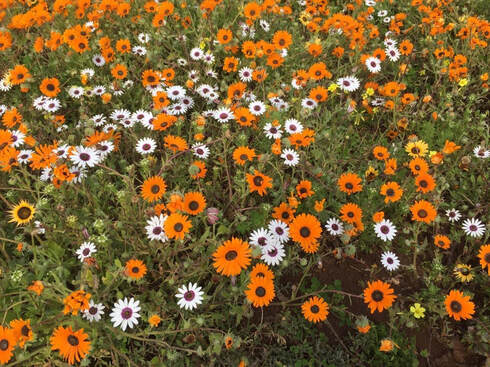 Spring has sprung with bursts of new growth, colour and energy. This is a time when the sun is above us and the length of night and day is almost equal (vernal equinox). The long winter shadows of this year’s lockdown are shifting, and the sun is rising earlier. There is a slow awakening from the winter slumber. Many of us have associated spring cleaning with this time of year. I am not usually a spring cleaner. However, during this lockdown winter, I have noticed the clutter and stuff that needs to be sorted. Spring cleaning became a tradition after winter to clear the dust from fires and oil lamps which were used for heating and lighting. Spring welcomed warmer weather so doors and windows could be opened for the removal of ash and dust. This coincided in the northern hemisphere with some religious celebrations that included Passover and Easter. Spring cleaning is a time for getting rid of gathered clutter, dirt and mess. For me, this is a slow and tedious process, like any chore, yet I am always glad to live with some order and neatness after the effort of tidying. I have been thinking about what clutter needs sorting and moving out. My cupboard has some old, neglected and frayed clothes. I have even have a pair of old school socks! A spring-cleaned cupboard could make space for some new clothes. Yet some possessions are hard to get rid of. It is easy to get attached to favourite clothes and possessions as they remind me of places and people. I have also been wondering about the clutter that we store up in our hearts and minds. I have some dusty memories of my military green school uniform with tie, white panama hat and school panties. I am wondering whether we all tend towards hoarding our past stories, grudges against others, hurts, joys, achievements, disappointments and failures. I am also wondering how keeping our stories and inner stuff clutters our internal home while letting go may open room for new beginnings. It seems there may be a need for a seasonal chore of letting go to make space for the new. This could be a lesson from nature waiting for us, like a patient winter. It is not just our inner and outer storage spaces that gather up stuff. Our communities are gathering up loads of plastic that are choking the environment. Our behaviour towards our natural world is having an effect. What would it mean if we each had to do a little bit of community spring cleaning, if we each picked up a piece of rubbish or even better did not throw our litter on the streets? There are some wonderful examples not only of spring cleaning our communities but also of giving to our environment. My neighbour is a good example; with her team, she has already planted over 150 trees in one small area and has plans for more. There are already more birds and insects around the trees within the short period of time since the first planting. Here are some tips for spring cleaning:
Let us make space for the joy of spring and new life. Let us make space for life-giving moments.  Words trigger experiences and memories in all of us. The words we use often hold a range of meanings for others and ourselves. I am grateful to Salisha for sharing so courageously her story about a word that triggered memories from the past. This is Salisha’s story in her own words. I am very grateful that my two children have each other and play well together, especially in this lockdown period. Their bond has been strengthened and the play dynamic between them has been highlighted. On a Thursday afternoon, my two boys were playing with LEGO, inventing new creations and comparing ideas. “That’s my block” yelled my 5 year old to his 3 year old brother, “give it back right now…you….you… you coconut”. As that word exploded out of my son’s mouth I felt a knot in my stomach. I had heard him use that word before, as well as other fruit and vegetables in the usual sibling spats. Name calling seems to be a way in which my children discharge strong feelings. Punches are substituted with words. This time it did not sit right with me. I could not simply overlook him calling his brother a coconut when that word had such a surreptitious meaning. My son was not aware in the least of the double meaning of the word coconut, but did it make it okay to use it? Why did this name calling incident touch such a sore nerve for me? As a person of colour I have very distinct memories of being called a “coconut”. It wasn’t because I had taken my brother’s toy. It was because I became too “white”. Growing up, whiteness was the standard to shoot towards. Having fair skin, light eyes, a good English accent, eating with a knife and fork as opposed to your hands - these were things to strive for. The more you looked and sounded white, the more doors would possibly open up for you. In a very unconscious way, the longing to belong to the group that seemed to have all the power meant a compromise of my own heritage but at the time, it was a very necessary survival strategy. Apartheid ended, when I was 10 years old, and over the next few years the tide changed, tempers raged and any person of colour that looked and sounded like me was a “coconut” - a traitor, a renegade, Judas, abandoning one’s own race or culture. There was a comparison to a coconut that was brown on the outside but white on the inside. It was a time in which many people needed to discharge angry feelings, and I was on the wrong side of the fence once again, like during Apartheid, feeling excluded and shamed for being who I was. I realised that I needed to explain to my son that he could not use the word coconut and provide a reason. Later that evening, I tried in the simplest way possible to explain to my son that for people who were brown like us, being called or calling someone a coconut is a really hurtful thing to say to them. I began the conversation explaining that in the old days, people of different skin colours were kept separate, and that in South Africa we were sort of a separate nation, and it hurt people to live apart. I went on to say that as times changed, people of all different types of skin colours were allowed to live and be together and that is why we are the Rainbow Nation. My son looked at me in astonishment, his eyes widened and he exclaimed “you’re saying I am brown?” My heart sank as I felt he completely missed the point of the conversation, but then I began to wonder what his remark about race actually meant and where it came from. I realised I had failed my son by avoiding a conversation about race with him. I wanted my children to grow up with an awareness and appreciation of race and culture and be free of any racial biases. In that moment I realised that not creating an awareness of race was something that I intentionally did with my children. Perhaps I needed to protect them from attitudes. How do you explain to a 5 year old that people who looked like him and me were discriminated against in such unimaginable ways? Would he begin to see that the world around him is still a remnant of this? I felt that avoiding a conversation about race had inadvertently meant that so much of what I had felt and experienced growing up in Apartheid South Africa had been projected onto him. That was my experience and not his. The conversation with my son continues and is open ended. He doesn’t call his brother a coconut anymore, but has switched to calling him Cocomelon – a well-known YouTube channel of young children’s nursery rhymes. How do I start a conversation about general name-calling and social media? As a parent, psychologist and person of colour I have started thinking about, searching for, and researching on ways to guide discussions of race in very young children. I have found a few helpful tips and share them here:
Our choices may reflect the world that we want our children to experience. |
Jacqui couperI have different roles; occupational therapist, mother, wife, friend and sister. I am curious about life and how little children grow to their potential with the support of parents, families and the wider community. Archives
March 2022
Categories |
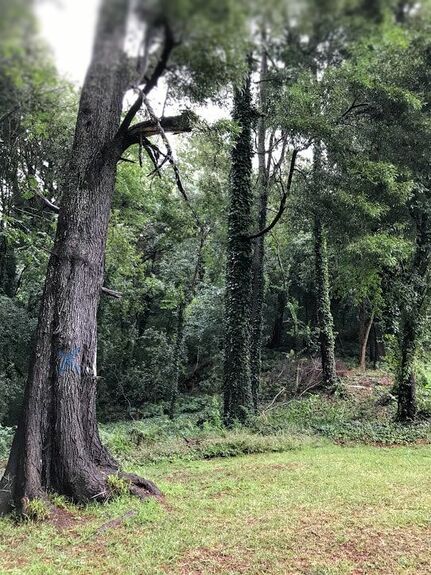
 RSS Feed
RSS Feed